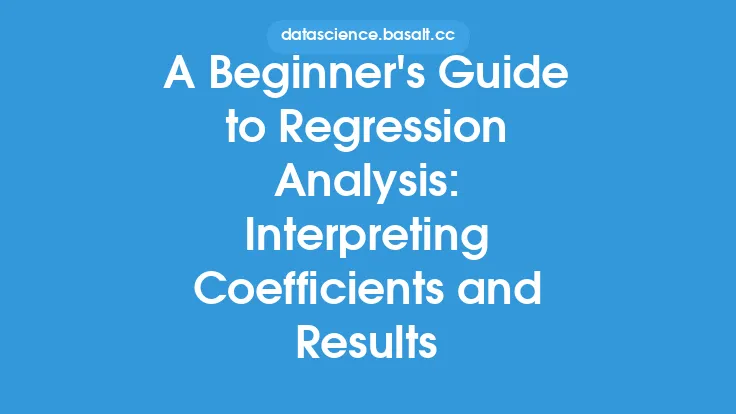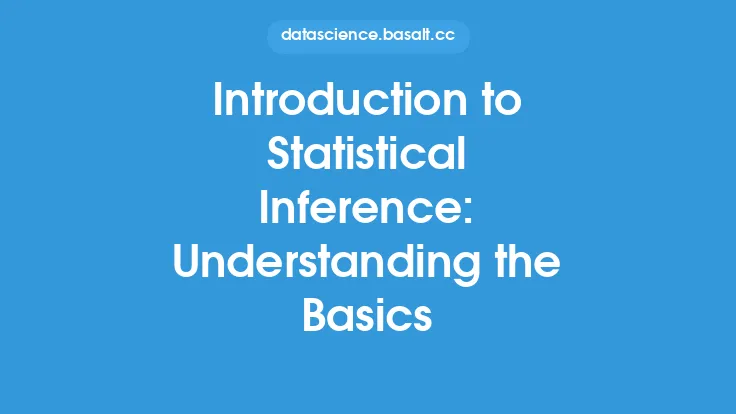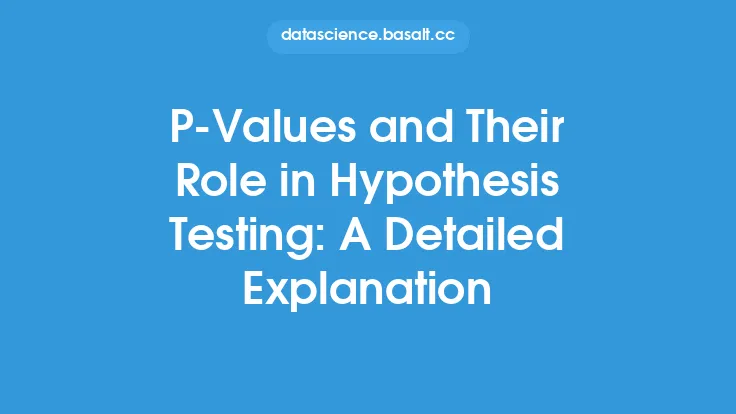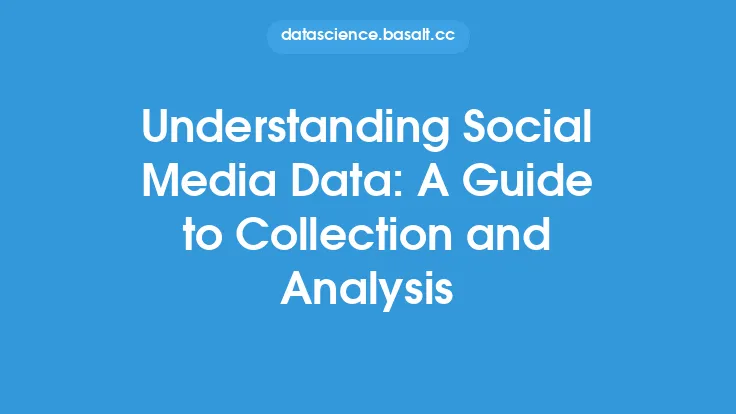In the realm of data analysis, statistical significance is a crucial concept that helps researchers and analysts determine whether their findings are due to chance or if they reflect a real effect. At the heart of statistical significance lies the p-value, a probability measure that has become a cornerstone in hypothesis testing. Understanding p-values and how to interpret them is essential for making informed decisions based on data analysis. This guide delves into the world of statistical significance, exploring what p-values are, how they are calculated, and most importantly, how to interpret them correctly.
Introduction to P-Values
P-values, or probability values, are a measure of the strength of evidence against a null hypothesis. The null hypothesis typically states that there is no effect or no difference, while the alternative hypothesis states that there is an effect or a difference. The p-value tells us the probability of observing our results (or more extreme results) if the null hypothesis were true. It does not tell us the probability that the null hypothesis is true, given our results, which is a common misconception. P-values range from 0 to 1, where a small p-value (typically less than 0.05) indicates strong evidence against the null hypothesis, suggesting that the observed effect is statistically significant.
Calculating P-Values
The calculation of p-values depends on the type of test being performed. For example, in a t-test, which compares the means of two groups, the p-value is calculated based on the t-statistic, the degrees of freedom, and the observed difference between the means. In more complex analyses, such as regression models, p-values are calculated for each coefficient to determine the significance of the relationship between the independent variable and the dependent variable. The specific formula for calculating a p-value varies, but the concept remains the same: to provide a measure of how likely it is to observe the results (or more extreme) assuming that the null hypothesis is true.
Interpreting P-Values
Interpreting p-values correctly is critical. A p-value below a certain significance level (commonly set at 0.05) leads to the rejection of the null hypothesis, indicating that the results are statistically significant. However, this does not necessarily mean the results are practically significant or meaningful in a real-world context. A statistically significant result might have a small effect size, suggesting that while there is a real effect, it might not be substantial enough to be of practical importance. On the other hand, a non-significant result (p-value greater than 0.05) does not necessarily mean that there is no effect; it might indicate that the study lacked sufficient power to detect an effect that is present.
Common Misconceptions About P-Values
There are several common misconceptions about p-values that can lead to misinterpretation. One of the most prevalent is the belief that a p-value measures the probability that the null hypothesis is true, given the data. In fact, the p-value measures the probability of the data (or more extreme), given that the null hypothesis is true. Another misconception is that p-values can tell us about the size or importance of an effect. P-values are solely a measure of statistical significance and do not provide information about the effect size or practical significance. Finally, the choice of the significance level (usually 0.05) is somewhat arbitrary, and there is ongoing debate among statisticians about its appropriateness in all contexts.
The Role of Sample Size
Sample size plays a critical role in the interpretation of p-values. With a large enough sample size, even very small effects can become statistically significant, simply because the test has enough power to detect them. Conversely, a small sample size might fail to detect a significant effect that is present, leading to a type II error (failing to reject a false null hypothesis). This highlights the importance of considering both statistical significance and practical significance when interpreting results.
Alternatives and Complements to P-Values
Given the limitations and potential for misinterpretation of p-values, there are alternatives and complements that can provide a more nuanced understanding of data. Confidence intervals, for example, provide a range of values within which the true effect is likely to lie, giving a sense of the effect size and its precision. Effect sizes, such as Cohen's d for comparing means, offer a direct measure of the magnitude of the effect, which can be more informative than a p-value alone. Bayesian methods offer an alternative approach to hypothesis testing, focusing on the probability of hypotheses given the data, which can be more intuitive for some researchers.
Best Practices for Using P-Values
To use p-values effectively, several best practices should be followed. First, it's essential to define the hypothesis and the significance level before collecting data to avoid post-hoc decisions that can inflate the type I error rate. Second, consider the sample size and the power of the test to ensure that the study is adequately designed to detect effects of interest. Third, always report the p-value precisely, rather than simply stating whether it is above or below a certain threshold, to allow for a more nuanced interpretation. Finally, consider supplementing p-values with other measures, such as effect sizes and confidence intervals, to provide a more complete picture of the results.
Conclusion
Understanding statistical significance and p-values is fundamental to data analysis. While p-values provide valuable information about whether an observed effect is likely due to chance, their interpretation requires careful consideration of the study's context, including the sample size, effect size, and practical significance of the findings. By recognizing both the utility and the limitations of p-values, and by supplementing them with other statistical measures, researchers and analysts can make more informed decisions based on their data. As the field of data analysis continues to evolve, a deep understanding of statistical significance and p-values will remain a cornerstone of evidence-based decision making.





